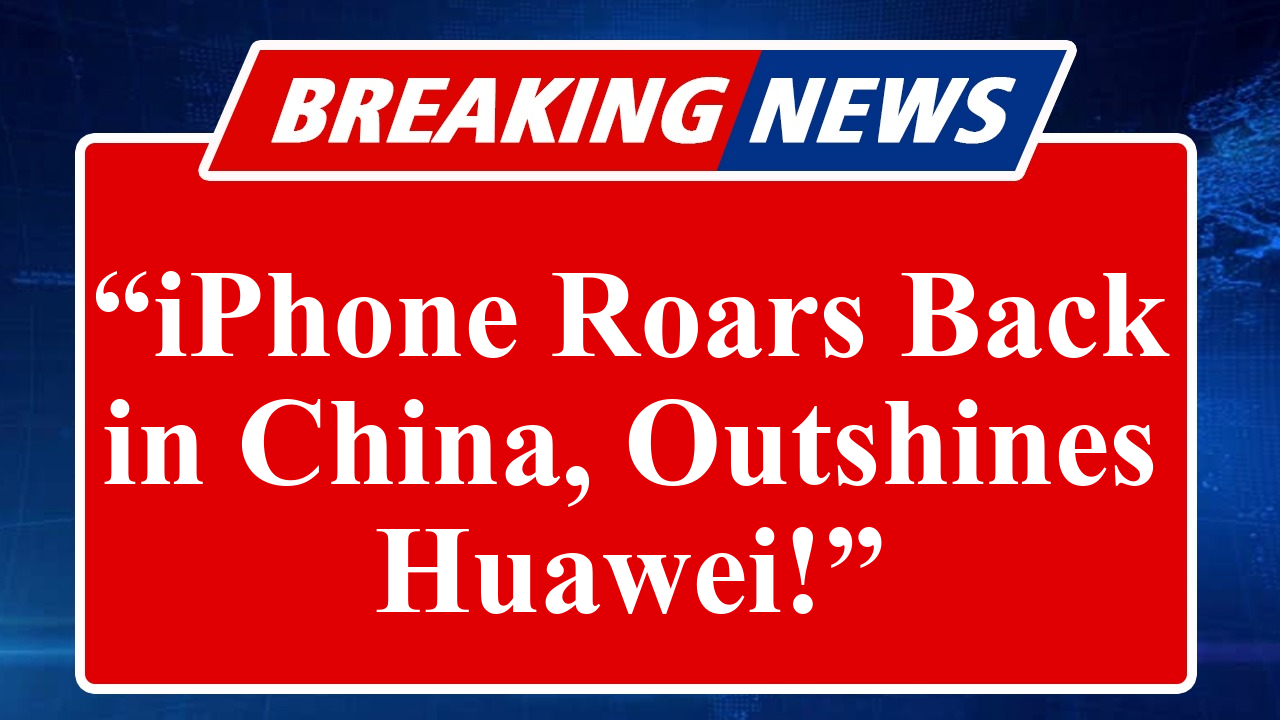Apple’s iPhone sales in China rose 8% in Q2 2025, marking the first growth in two years, driven by aggressive iPhone 16 promotions. Despite Huawei’s 12% sales surge, Apple reclaimed market share, ranking third behind Vivo and Huawei. The 618 shopping festival and strategic discounts fueled Apple’s comeback, though Huawei’s AI advancements and local chip production continue to challenge foreign brands.
Apple’s Resurgent iPhone Sales Outpace Huawei in China
In a remarkable turnaround, Apple’s iPhone sales in China recorded an 8% year-on-year growth in the second quarter of 2025, ending a two-year decline, according to Counterpoint Research. This surge, the first since Q2 2023, was propelled by well-timed promotions on the iPhone 16 series, particularly during the 618 shopping festival in May. The iPhone 16 Pro and Pro Max models saw strong demand, with sales of these premium variants rising 44% compared to the previous year’s models. Apple’s strategic price adjustments, including discounts of up to 15% and increased trade-in values, resonated with Chinese consumers, helping the company reclaim its position as the third-largest smartphone vendor in China with a 15.6% market share.
Huawei, which has staged a dramatic comeback since its Mate 60 series launch in 2023, continued its strong performance with a 12% sales increase in Q2 2025, securing the top spot with an 18.1% market share. The Chinese tech giant’s success is attributed to its domestically produced Kirin chips and the AI-powered HarmonyOS NEXT operating system, which have garnered patriotic support from local consumers. Huawei’s Mate XT trifold 5G smartphone, launched alongside the iPhone 16 in September 2024, further intensified competition in the premium segment. Despite this, Apple’s aggressive pricing strategy and brand appeal enabled it to edge out Huawei in key promotional periods.
The broader Chinese smartphone market grew modestly by 3.2% in Q3 2024, reaching 68.78 million units, as per IDC data. Vivo maintained its lead with an 18.6% market share, while Huawei and Apple closely followed. However, Apple faces challenges, including the absence of Apple Intelligence in China due to stringent AI regulations, which has allowed rivals like Huawei to promote their AI capabilities as a selling point. Additionally, the removal of iPhones priced below 6,000 yuan from China’s subsidy scheme has put pressure on Apple’s mid-range offerings.
Analysts note that Apple’s recovery was partly fueled by a shift in consumer sentiment. While Huawei’s resurgence has been tied to national pride and technological self-reliance, Apple’s discounts and premium branding appealed to urban consumers seeking high-end devices. Counterpoint’s Ethan Qi highlighted that Apple’s May promotions, timed a week before the 618 festival, were “well received,” with three iPhone variants ranking among the top-selling smartphones during the period. However, Huawei’s dominance in budget and mid-range segments, bolstered by government subsidies, continues to challenge Apple’s market position.
The competition remains fierce as Huawei leverages its homegrown technology to expand both domestically and internationally. Apple, meanwhile, is banking on future demand driven by anticipated Apple Intelligence updates, expected to roll out in Chinese by 2026. CEO Tim Cook’s recent visits to China underscore the market’s importance, with pledges to deepen investment in the region’s supply chain. As the Chinese smartphone market braces for single-digit growth in 2025, Apple’s ability to navigate regulatory hurdles and sustain its promotional momentum will be critical to maintaining its edge over Huawei.
Disclaimer: This article is based on reports and data from Counterpoint Research, IDC, and other publicly available sources. Information is accurate as of July 7, 2025, and subject to change. Readers are advised to verify details independently.

